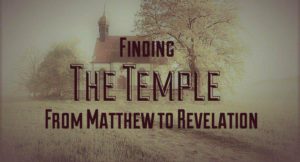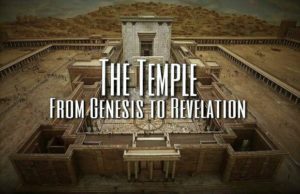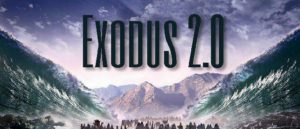Lesson 1 identified the Bible’s plot that starts in Genesis and finds completion in Revelation. That plot is redemption, poking its head out in every book of the Bible. The book of Genesis introduces several themes that help develop this plot. Lesson 2 focuses on the first of those themes-
the Garden of Eden
Have you read your Bible through from Genesis to Revelation? If you have, then you have read about the Garden of Eden outside of Genesis. My extrasensory perception tells me you are in disbelief. Well start believing my brutha! Let’s first talk about the use of imagery in the Bible, and then I will attempt to make you a believer with a buckshot of biblical proofs.
Hosea is the first book in the English Bible ordering of the Minor Prophets. You might recall that Hosea was ordered by God to marry a harlot (prostitute) named Gomer. Well, Gomer Pyle did what she did best; she slept with any and everyone except her covenant husband. Hosea 3:1 explains that Gomer’s covenant unfaithfulness to Hosea was a graphic image of Israel’s covenant unfaithfulness to God. Other prophets used grotesque images to convey the spiritual quagmire of Israel (i.e. Ezekiel 16). This radical literary technique of using something the people are familiar with, to illustrate a spiritual truth, is known as imagery or symbolism. Hosea 12:10 explains that imagery was the bread and butter of the prophets,
“I have also spoken by the prophets, and have multiplied visions; I have given symbols through the witness of the prophets.”
What does this have to do with the Garden of Eden? First, know that the Garden of Eden was a real place. If you believe the Bible is the inspired word of God, you must agree with this fact. Moses wrote the historical document of Genesis to Israel as an explanation of their origins and their role in the redemption of man. Second, the Jews understood the Garden of Eden to be a real place, and that’s why this relatable image was perfect for helping them understand the ultimate spiritual rest, spiritual peace, and glorious perfection fulfilled at Messiah’s coming. They understood this to be a place where God dwelt with His people, as in the temple, and was the life source of all things. Thus, Moses and the prophets that followed after him used images of the Garden of Eden to help Israel visualize their future restoration and redemption, a time when God would walk among His people giving everlasting life and peace. Now, pay close attention as I pull the trigger on my Bible shotgun and spray buckshot from the prophets, showing how they utilize the beautiful imagery of Eden.
1. Moses– The first use of imagery from the Garden of Eden is found in Genesis 13:10. Here, Moses describes the land of Canaan, the land that Lot chose over his Uncle Abram. “And Lot lifted his eyes and saw all the plain of Jordan, that it was well watered everywhere…like the garden of the Lord, like the land of Egypt as you go toward Zoar.” This is the very land Israel would call the “promised land”. Not coincidentally, it was also the land Israel was about to go and possess when Moses wrote the very words of Genesis 13:10. Moses contributes to the progressive Biblical plot of restoration and redemption, by helping the reader understand that Canaan, “a land flowing with milk and honey,” (Exodus 33:3) is like the Garden of Eden. Unfortunately, Israel sins like Adam and Eve, and they are cast out of the garden as it were
2. Isaiah– The “Messianic Prophet” as he is called, prophecies against Israel during the years that lead up to Israel being carried off into Assyrian captivity. By Chapter 51, Isaiah has made it very clear that Israel has not been faithful to their covenant with God, and they would soon fall to one of the most inhumane world empires in the annals of history- the Assyrian Empire. However, after pronouncing judgment, Isaiah gives a prophecy of hope to Israel after exile, “The Lord will comfort Zion, He will comfort all her waste places; He will make her wilderness like Eden, and her desert like the garden of the Lord…” (Is. 51:3). Isaiah uses the Garden of Eden, an image of ultimate rest, peace, and perfection, to help Israel visualize a time in the future when Israel would be restored spiritually by God Himself in their midst.
3. Ezekiel– This young priest prophesied while the nation of Judah was being oppressed in the land of Babylon. Ezekiel 36:16 – 37:28 is one large section about the restoration of Israel after Babylonian captivity. They would be restored to the land of Canaan physically (fulfilled in 536 B.C.) and sometime after that time marker, the Messiah would come and restore Israel spiritually, reign over Israel as a Davidic king (37:21-25), and establish a new covenant of peace with them (37:26-27). Amidst all this vivid imagery, Ezekiel pronounces, “So they will say, ‘This land that was desolate has become like the garden of Eden; and the wasted, desolate, and ruined cities are now fortified and inhabited,'” (36:35). The spiritual restoration (forgiveness of sins) that would be accomplished by the Messiah is here expressed in terms of the Garden of Eden. Just as Adam and Eve were perfect creatures in a perfect garden, so would be the spiritual reality of Israel when Messiah (God in the flesh; Hebrews 1:1-4) redeemed them through His death and began to reign over them at the right hand of God (Acts 2:33-36).
This is but a short sample of the Garden of Eden imagery in the prophets. Sometimes the prophets may not specify “Garden of Eden” when using such imagery, but symbols such as “new heavens and a new earth” in Isaiah 65:17 should transport the reader back to the garden. Other occurrences such as in Ezekiel 47 use many symbols that have a strong odor of Eden. “There, along the bank of the river, were very many trees on one side and the other,” (47:7). “And it shall be that every living thing that moves, wherever these rivers go, will live,” (47:9). “There will be a very great multitude of fish, because these waters go there; for they will be healed, and everything will live wherever the river goes,” (47:9). Christ is described as the Light that illuminated the Garden of Eden in John 1:1-9, and His coming to walk among men (John 1:14) is reminiscent of Yahweh walking in the Garden (Gen. 3:8). When Paul speaks of Christians as a “new creation” (2 Cor. 5:17), made “in His image” (Col. 3:10), he uses imagery from the context of the garden of Eden. Here is a sample list of other prophecies that utilize Eden imagery (Isaiah 11:6-10; 58:11; 66:22; Jeremiah 31:11-12; Hosea 14:4-8; Joel 2:3; 3:18-21; Matt. 5:5; James 1:17-18; Revelation 2:7; 21:1 – 22:5).
Hopefully, your appetite has been satisfied, and you appreciate the progressive story line that runs from Genesis to Revelation. Next week we will see the Bible’s unfolding story of redemption in terms of Exodus from Egypt. Log on next week for Lesson 3!




Comments
i would love to have the series on the garden of eden from genesis to revelation. I can only find lesson 2
Author
Unfortunately, there is only one article that covers “the garden of Eden.” This was written some time ago, and whereas I thought there was a follow-up article, it was a stand-alone piece.